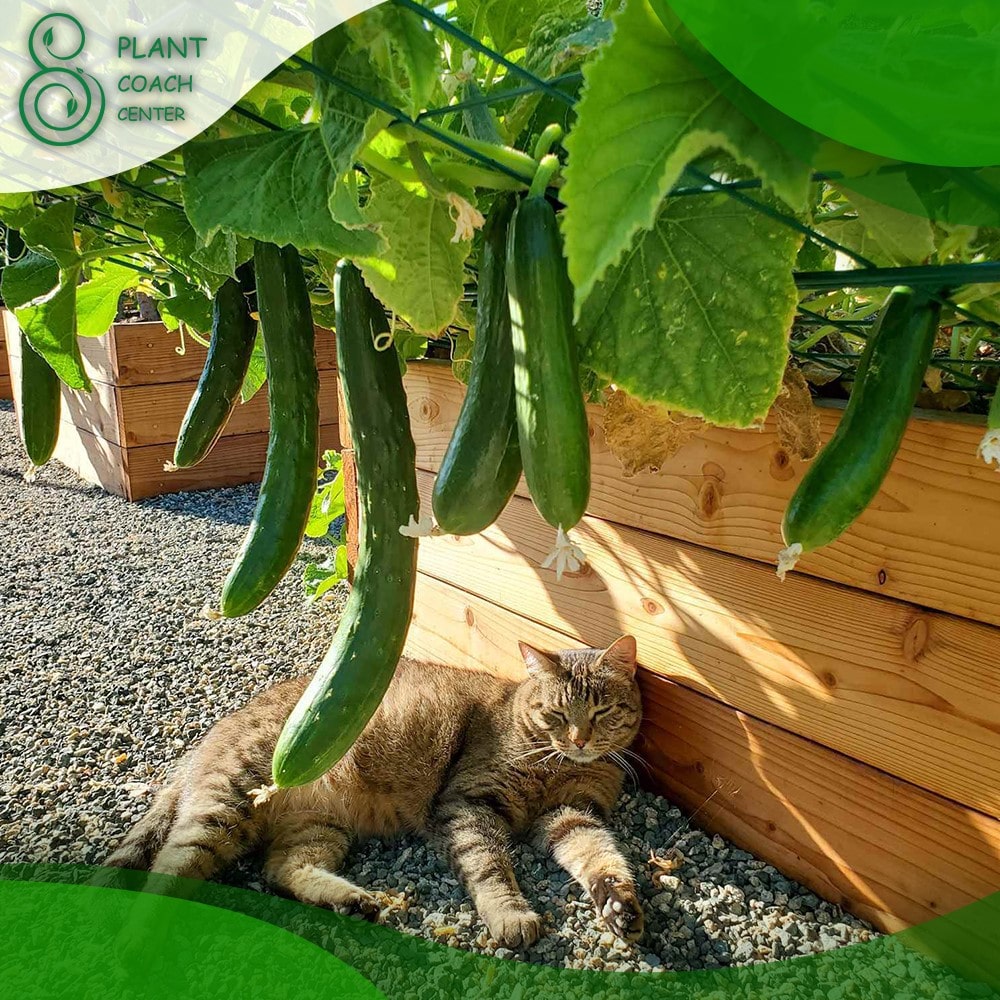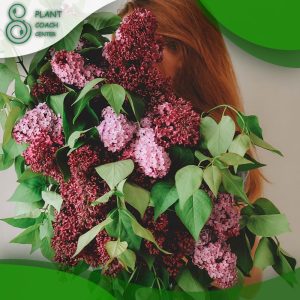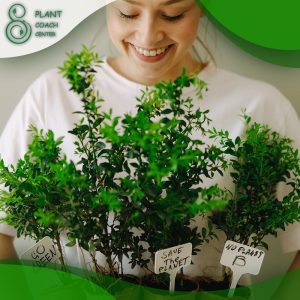When Should I Plant Cucumbers?
Welcome to the vibrant world of cucumbers, where crunchy bites and refreshing salads await. If you’re a gardening enthusiast or a green-thumb dreamer, the question of “When should I plant cucumbers?” has likely crossed your mind. Whether you’re a seasoned cultivator or a budding gardener, understanding the art of timing is essential to nurturing healthy cucumber plants that yield bountiful harvests.
As the seasons shift and the garden beckons, this article serves as your compass, guiding you through the intricate dance of weather, soil, and nature’s rhythms. From decoding frost-free dates to deciphering soil temperature secrets, we embark on a journey that combines ancient wisdom with modern insights. Whether you envision pickling delights, garden-fresh salsas, or simply delighting in the joy of watching tendrils reach for the sky, the timing of cucumber planting plays a pivotal role in your gardening success.
So, grab your gardening gloves, and let’s explore the fascinating chronicle of when and how to plant cucumbers, ensuring a fruitful and flavorful adventure ahead.

Cucumber Varieties and Their Seasonal Preferences
When it comes to cucumbers, the world of varieties is as diverse as it is exciting. Each cucumber type comes with its own personality, flavor profile, and, importantly, seasonal preferences. Understanding these nuances can significantly influence your planting decisions and ultimately contribute to a thriving cucumber harvest.
Traditional Slicers
The classic slicing cucumber varieties, like ‘Marketmore’ and ‘Straight Eight,’ thrive during the warmer months of spring and summer. These cucumbers are your go-to for fresh salads and sandwiches, boasting a crisp texture and mild, refreshing taste. Aim to plant them after the last frost date in your area when the soil has warmed up, and the risk of frost has passed.
Pickling Perfection
For those craving homemade pickles, pickling cucumber varieties such as ‘Boston Pickling’ and ‘National Pickling’ are your best companions. These compact vines prefer the warmth of late spring and early summer. Plant them earlier than slicing cucumbers, as they don’t need as long a growing season to reach their pickle-worthy size.
Burpless Beauties
If you’re looking for cucumbers that are easy on digestion and offer a milder flavor, consider the burpless or seedless varieties like ‘Sweet Success’ or ‘Diva.’ These cucumbers shine in the heat of midsummer and continue producing through the warm months. Their thinner skin and reduced seeds make them a favorite for snacking and fresh dishes.
Long Season Types
Some cucumber varieties, like ‘Japanese Long’ or ‘Armenian,’ require a longer growing season due to their unique elongated shapes. These cucumbers are often enjoyed in international dishes and possess a slightly different taste and texture. Start these indoors or in a greenhouse a few weeks before the last frost, as they can take more time to mature.
Greenhouse Champions
For those with greenhouses or controlled environments, specialty cucumber types like ‘English’ or ‘European’ cucumbers flourish throughout the year. Their thin skin and tender flesh make them a gourmet addition to salads and sandwiches. These cucumbers are less reliant on external temperatures and can be grown almost any time.
Indeed, here’s the content for the “Reading the Weather Signs” subtopic
Embarking on your cucumber planting journey requires more than just consulting a calendar. Nature has its own language, and by tuning in to the weather signs, you can gain valuable insights into the optimal time to sow your cucumber seeds or transplant your young seedlings.
Temperature Trends
As the seasons transition, pay attention to temperature trends in your region. Cucumbers thrive in warm soil and air temperatures. If you find that temperatures have consistently reached a point where shorts and t-shirts are the norm, it’s likely an excellent time to plant your cucumbers. Sustained nighttime temperatures above 50°F (10°C) are critical, as cucumbers are sensitive to cold.
Last Frost Date
One of the most crucial weather indicators is the last frost date. Cucumbers should be planted in regions with distinct seasons after the last expected frost. Growing too early can put your cucumber plants at risk of frost damage, stunting their growth, or even killing them. Local agricultural extension offices often guide frost dates based on historical weather data.
Soil Moisture and Texture
Before planting, assess the soil moisture and texture. Soggy soil indicates that it might be too early to produce, as cold, wet conditions can hinder germination and root development. Optimal soil texture should crumble when squeezed, allowing proper water drainage and root growth.
Daylight Hours
The length of daylight hours also influences cucumber planting. Longer days provide more sunlight, which cucumber plants need to photosynthesize and grow. If you’re in a region with distinct seasons, planting as daylight hours increase in the spring sets the stage for vigorous cucumber growth.
Local Climate Patterns
Become familiar with your local climate patterns. Does your region tend to experience sudden temperature drops or unseasonably warm spells? These deviations can impact when you should plant cucumbers. Monitoring weather forecasts and paying attention to trends over the years can help you fine-tune your planting schedule.
Microclimates
Remember that your garden might have microclimates due to sun exposure, wind patterns, and nearby structures. These microclimates can influence temperature and moisture levels, allowing you to plant cucumbers a bit earlier in a sheltered area or later in a more relaxed spot.

Frost-Free Dates and Cucumber Planting
In the delicate dance of cucumber gardening, timing is everything. One of the pivotal factors to consider when answering the question of “When should I plant cucumbers?” is the frost-free date. This date marks the end of the cold and frost-prone period in your region, and it’s a key milestone for ensuring the success of your cucumber plants.
Understanding the significance of the frost-free date involves a harmonious blend of science and observation. Cucumber plants are susceptible to cold temperatures, and even a hint of frost can wreak havoc on their delicate structures. Planting too early can lead to stunted growth, damaged leaves, and, in severe cases, the death of the plants.
To work in harmony with the frost-free date, consider the following guidelines:
Research Your Region
Local agricultural extension offices and gardening communities often have historical data on the average last frost date for your area. This valuable information can give you a rough estimate of when it’s safe to start planting cucumbers.
Protective Measures
If you want to start gardening before the frost-free date arrives, consider using protective measures such as row covers or cloths to shield your cucumber plants from potential cold snaps. These covers can create a mini-greenhouse effect, providing a buffer against frosty conditions.
Transplants vs. Direct Sowing
Depending on your region’s climate and the type of cucumber you’re growing, you may start your cucumbers indoors as transplants or sow the seeds directly in the ground. Transplants offer a head start and can be introduced to the garden closer to the frost-free date, while direct sowing requires waiting until after the risk of frost has passed.
Monitoring Weather Patterns
While the average last frost date provides a general guideline, it’s essential to monitor weather patterns leading up to that date. Unseasonably cold weather can delay the safe planting window, so keep an eye on weather forecasts and adjust your plans accordingly.
Growing Season
Remember that cucumbers have a relatively short growing season, typically around 50 to 70 days from planting to harvest. By aligning your planting schedule with the frost-free date, you’re optimizing your cucumber plants’ growth period and increasing the chances of a bountiful harvest before the cold returns.
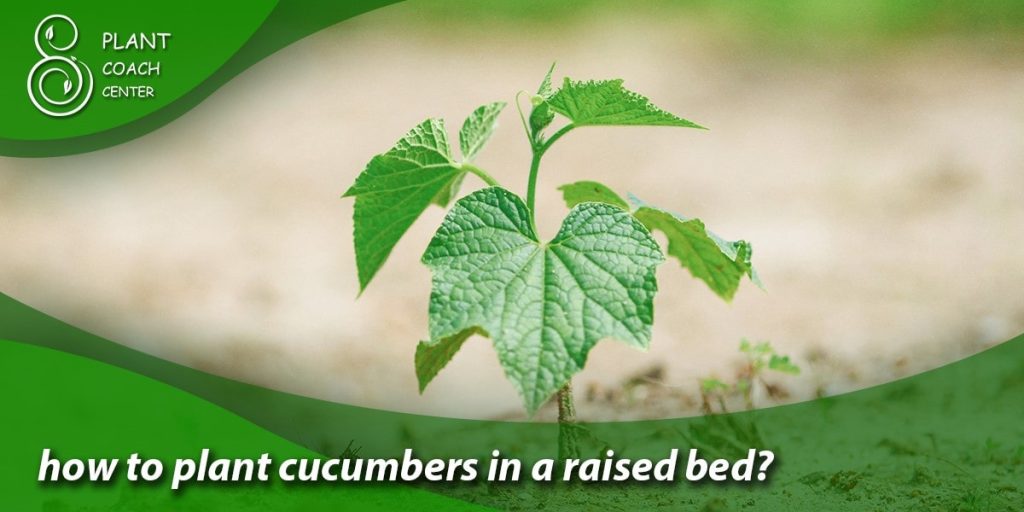
Soil Temperature Matters
In the intricate world of cucumber cultivation, a key player often overlooked is the temperature of the soil beneath your feet. The ground’s warmth can significantly impact the success of your cucumber plants, influencing everything from germination to growth rate. Understanding why soil temperature matters and how to ensure optimal conditions is a critical step in your cucumber planting journey.
Germination Magic
Cucumber seeds are incredibly responsive to soil temperature. The optimal soil temperature for cucumber germination generally falls in the range of 60°F to 95°F (15°C to 35°C). Planting cucumbers in too cold soil can lead to slow or uneven germination, while warmer soil encourages faster and more uniform sprouting.
Root Health
As your cucumber plants establish themselves, soil temperature plays a crucial role. Excellent soil can slow down root development, leading to weak or stunted plants. On the other hand, soil that’s sufficiently warm fosters robust root growth, providing your cucumbers with a strong foundation for a healthy and productive life.
Thermometer Know-How
Invest in a soil thermometer, a handy tool that helps you accurately measure the temperature of the soil at different depths. To get an accurate reading, place the thermometer about 2 to 4 inches (5 to 10 cm) below the soil surface, the typical depth at which cucumber seeds are sown.
Time of Day Matters
Soil temperature isn’t static; it varies throughout the day. The warmest temperatures are usually reached in the late afternoon, while early mornings are more relaxed. Aim to plant your cucumber seeds or transplant your seedlings when the soil has warmed up, promoting healthy growth from the get-go.
Warming Techniques
If your soil temperature is below the ideal range, there are strategies to warm it up. Using black plastic mulch, for instance, absorbs and retains heat, raising the soil temperature and creating a cozy environment for your cucumber plants.
Mulching for Consistency
Applying organic mulch, such as straw or compost, around your cucumber plants can help regulate soil temperature. It acts as an insulator, preventing rapid temperature fluctuations and keeping the soil comfortably warm as the day transitions into night.
Indoor vs. Outdoor Starts
The choice between starting your cucumber journey indoors or directly sowing them outdoors is a decision that can influence the trajectory of your gardening adventure. Each approach has advantages and considerations, allowing you to tailor your cucumber planting experience to your unique circumstances and preferences.
Starting Indoors
Early Start: One primary benefit of cucumber seeds indoors is gaining an early start to the growing season. By sowing seeds in controlled indoor environments, you can initiate germination before the last frost date, giving your cucumber plants a head start on growth.
Optimal Conditions
Indoor seed starting allows you to provide optimal conditions for germination and early growth. You can control factors such as temperature, humidity, and lighting, creating an environment that promotes strong and healthy seedlings.
Transplanting Advantage
When you start cucumbers indoors, you’ll have the opportunity to carefully nurture and monitor the growth of your seedlings. This means you can select the strongest, healthiest plants to transplant outdoors, increasing the chances of successful establishment.
Protection from Weather Extremes
Young cucumber seedlings can be vulnerable to unpredictable weather, including sudden temperature drops or heavy rains. Starting indoors helps shield them from these early challenges, providing a buffer against adverse conditions.
Direct Sowing Outdoors
Simplicity and Convenience: Directly sowing cucumber seeds in their intended outdoor location is straightforward and requires less initial effort. This approach is ideal if you seek a more concise way to start your cucumber plants.
Less Transplant Shock
When cucumber plants are sown directly in the garden, they avoid the potential transplant shock that can occur when moving seedlings from indoor to outdoor environments. This can lead to faster establishment and growth.
Natural Adaptation
Direct sowing exposes cucumber plants to the natural outdoor conditions from the beginning, allowing them to immediately adapt to the local climate and weather patterns.
Variety Flexibility
Certain cucumber varieties, especially those with shorter growing seasons, fare better with direct sowing. This ensures that the plants have ample time to grow and produce fruit before the end of the warm season.

Extending the Cucumber Season
As the warmth of summer unfolds, cucumbers grace our gardens with their vibrant green presence and refreshing flavors. But why limit their stay to just a short season? With strategic planning and a dash of creativity, you can extend the cucumber season, ensuring a longer harvest window and a continuous supply of these delectable delights.
Succession Planting
Sowing in Intervals: Succession planting involves sowing cucumber seeds at regular intervals, staggered by a few weeks. Doing so ensures a continuous supply of cucumbers rather than a glut all at once. As you harvest mature cucumbers, new ones are coming, maintaining a steady produce stream.
Late Summer Planting
If your cucumber plants start to wane as summer winds down, consider planting a new round of cucumber seeds in late summer. As the days remain warm, these late-season cucumbers have the potential to thrive and provide fresh harvests well into the fall.
Protective Covers and Structures
Row Covers: When calmer temperatures approach, employing row covers can help protect cucumber plants from chilly nights. Row covers protect against frost and wind, enabling your cucumbers to grow and produce.
Greenhouses or High Tunnels
If you have access to a greenhouse or a high tunnel, you can control the growing environment. With regulated temperature and protection from the elements, you can extend the cucumber season significantly, allowing year-round cultivation.
Variety Selection
Cold-Resistant Varieties: Some cucumber varieties are better suited to cooler temperatures. Look for “cold-resistant” or “early-bearing” types for success in the shoulder seasons when temperatures are more relaxed.
Mulching and Soil Care
Mulch for Temperature Regulation: Applying a layer of organic mulch around cucumber plants can help regulate soil temperature, preventing rapid fluctuations. This can extend the growing season by maintaining warmer soil as the weather cools.
Soil Health
Healthy soil leads to healthy plants, which can extend their productive period. Enhance soil fertility with compost, well-balanced fertilizers, and proper watering practices to keep your cucumbers thriving.
Protection from Frost
Frost Cloth or Blankets: When the threat of frost looms, covering your cucumber plants with frost cloth or blankets can provide a protective barrier against freezing temperatures. This extra layer can safeguard your plants and extend the harvest.
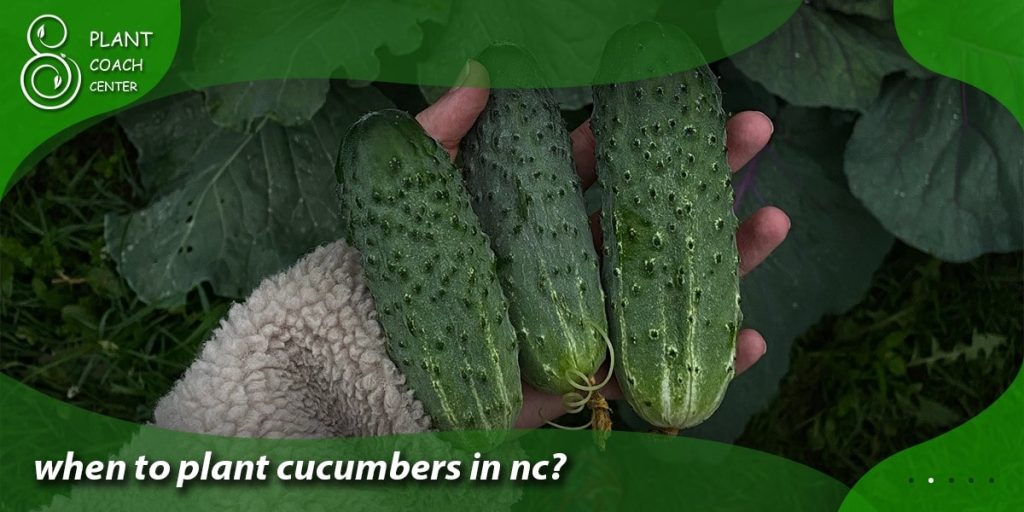
Regional Insights: Cucumber Planting Calendar
Gardening is a beautiful blend of science, art, and connection with the land. One of the keys to a successful cucumber planting experience lies in understanding the nuances of your region’s climate and growing seasons. Every geographical area has its own challenges and advantages, making a region-specific cucumber planting calendar a valuable tool for any gardener.
Early Spring Regions
Southern States: If you’re gardening in the southern states, where winters are mild and spring arrives earlier, you can start cucumber seeds as early as February indoors. Transplanting young seedlings into the garden can begin in March, taking advantage of the warmer temperatures that grace the region earlier than others.
Traditional Spring Regions
Mid-Atlantic and Midwest: In regions like the Mid-Atlantic and Midwest, where winters are colder and spring arrives more traditionally, wait until after the last frost date – typically in April or early May – to start sowing cucumber seeds. Transplant seedlings into the garden around the same time for optimal results.
Cool Summer Regions
Northern States and Mountain Regions: If you’re in the northern states or mountainous regions, where summers are relatively short and cool, consider planting cucumber seeds indoors in April and transplanting them outdoors in late May or early June after the last frost. This ensures that your cucumbers get an entire growing season and thrive even in more excellent conditions.
Mediterranean and Mild Climates
Coastal Regions: In Mediterranean and coastal climates with mild winters, you might enjoy the luxury of planting cucumbers almost year-round. Spring and fall are exceptionally favorable, offering moderate temperatures that cucumbers love. Avoid planting during the hottest parts of summer to prevent plant stress.
Tips for All Regions
Soil Temperature: Regardless of your region, soil temperature remains critical. Ensure the soil has warmed to around 60°F (15°C) or higher before sowing cucumber seeds or transplanting seedlings.
Frost Dates
Consult local resources or agricultural extension offices to determine your region’s average last frost date. Use this date as a guide to help you time your cucumber planting efforts.
Microclimates
Be aware of microclimates in your garden caused by sun exposure and wind patterns. These localized conditions can influence when and where you plant your cucumbers for the best results.
Conclusion
In the world of cucumber cultivation, timing is the secret ingredient that transforms a mere garden into a symphony of vibrant flavors and textures. From deciphering frost-free dates and soil temperature secrets to choosing the perfect variety for each season, your journey with cucumbers is a harmonious blend of science, observation, and connection with nature.
Whether you’re embracing the simplicity of direct sowing or nurturing seedlings indoors for a head start, the art of cucumber gardening is a testament to the beauty of adapting to regional climates and the changing seasons. At PlantCouchCenter.com, we invite you to embark on this cucumber-growing adventure armed with knowledge, curiosity, and reverence for the subtle cues that nature provides.
As you watch tendrils reach for the sky and witness the transformation from seed to harvest, you’ll find that the joy of cultivating cucumbers extends far beyond the garden bed. This journey enriches your connection with the earth and the delightful rewards it brings.
When can I plant cucumbers outdoors?
After the last frost date, temperatures are consistently above 50°F (10°C).
Can I start cucumber seeds indoors?
Yes, begin seeds indoors 3-4 weeks before the last frost for a head start.
How can I extend the cucumber season?
Use succession planting and protective covers to ensure a more extended cucumber harvest.


